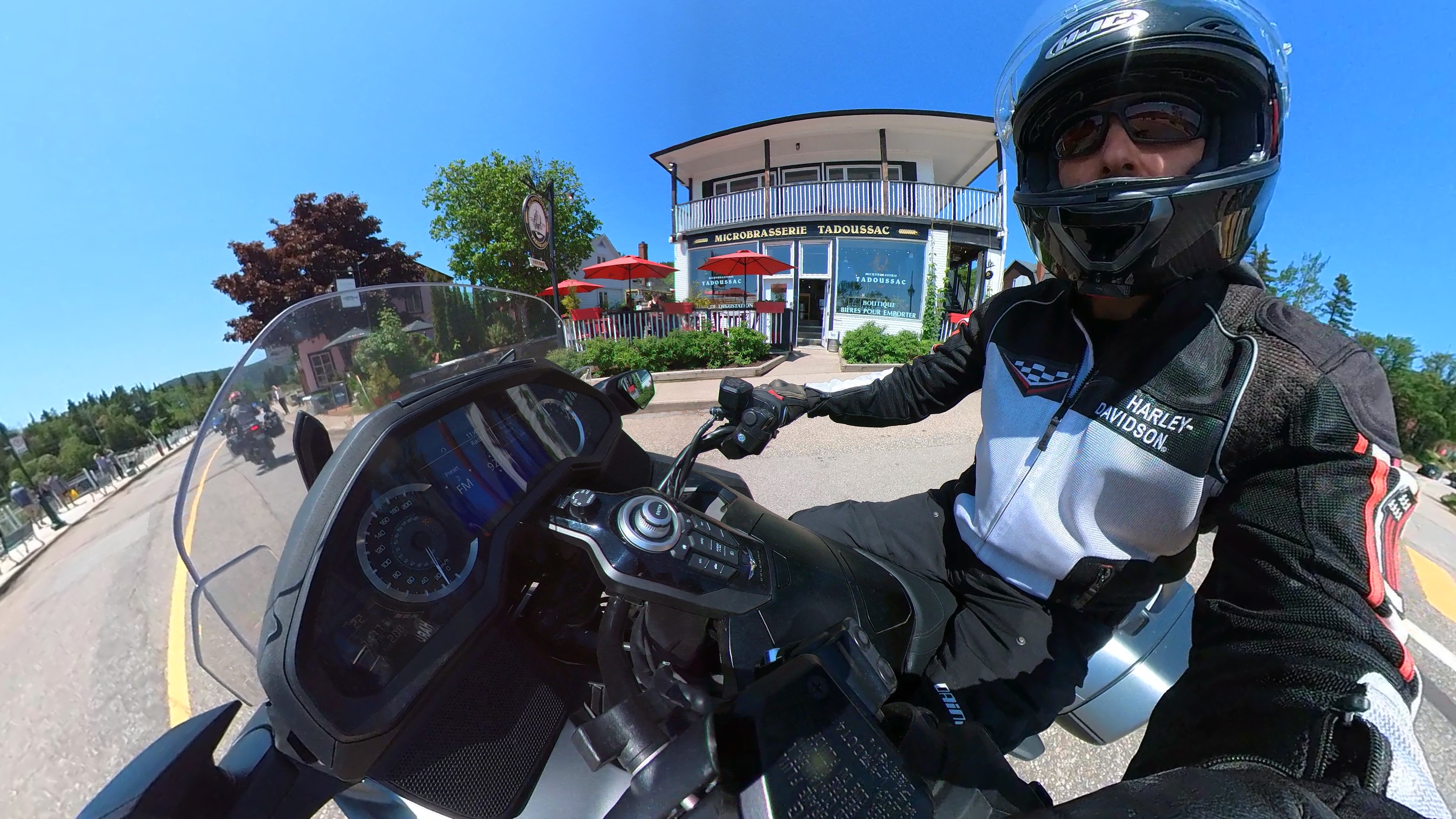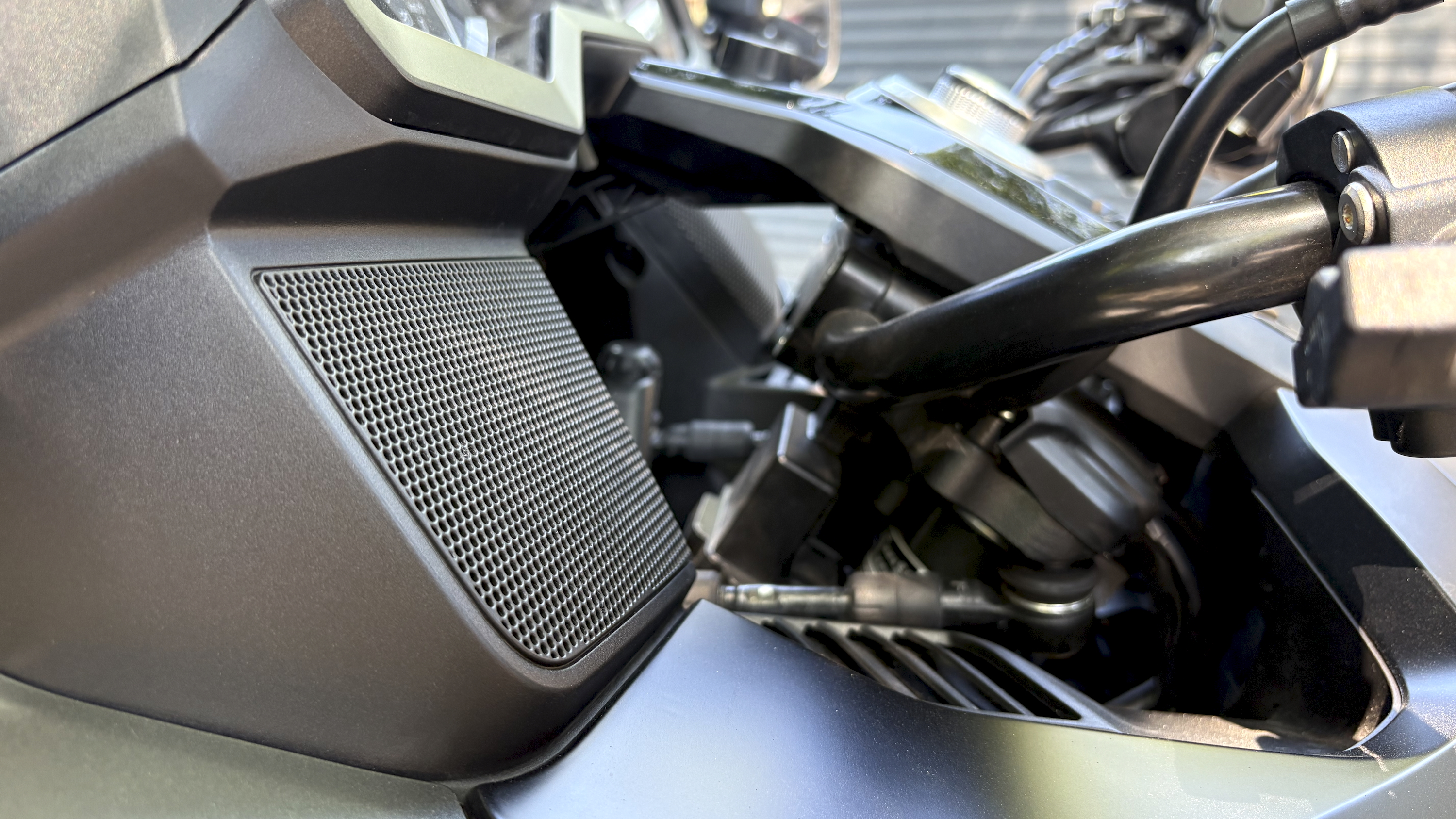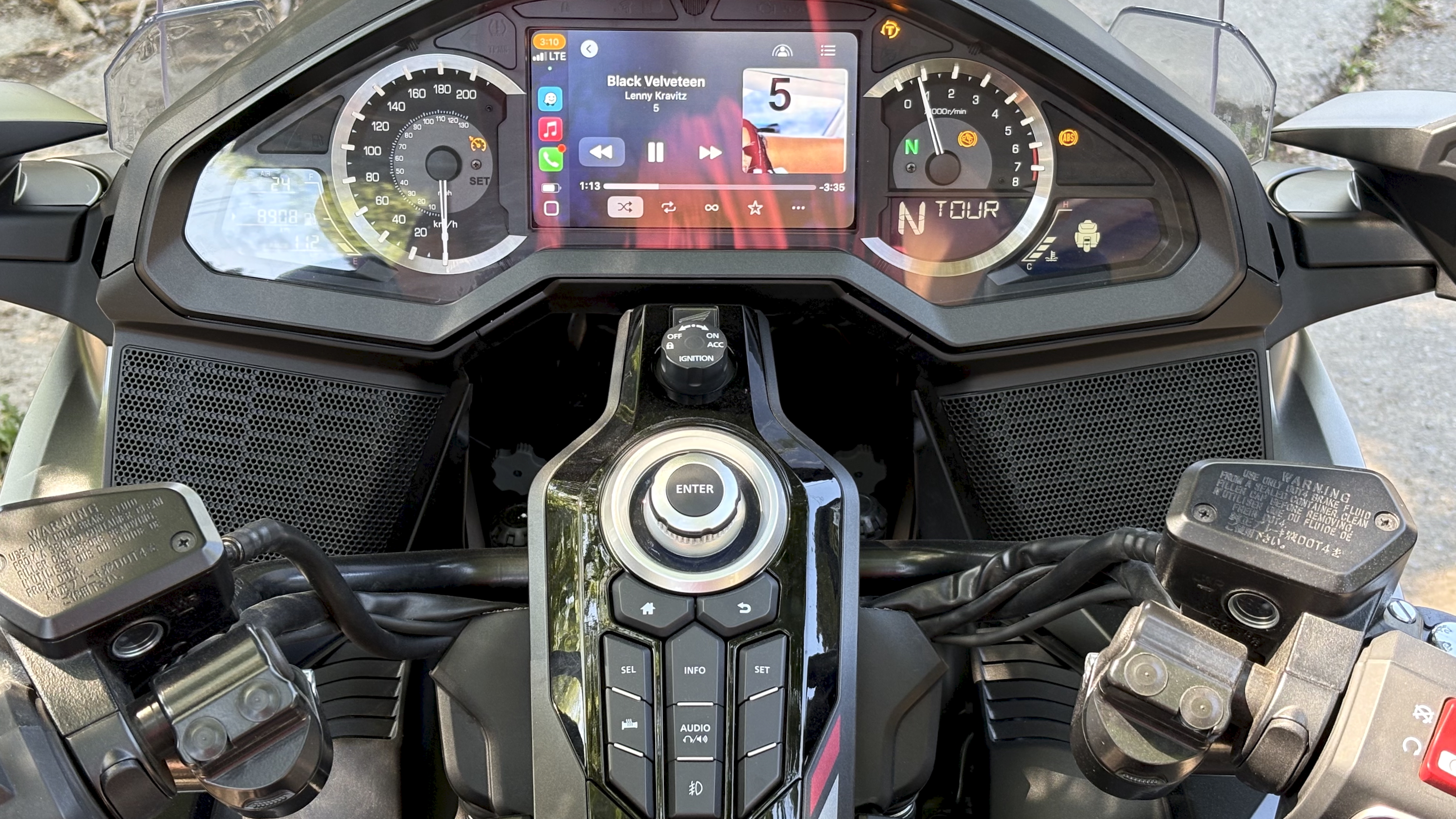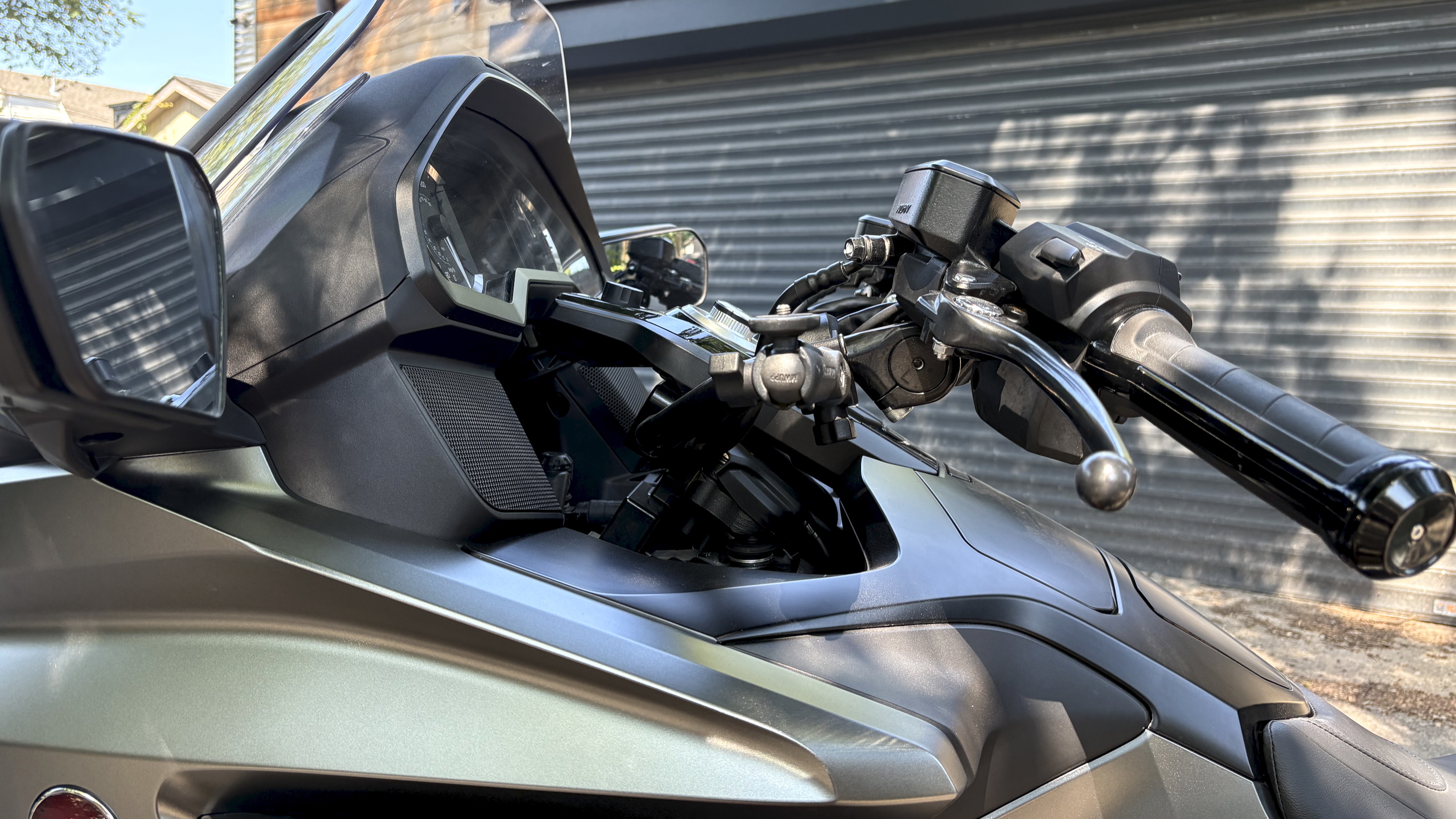Unpopular opinion: the best stereo system I own is actually built into my motorbike
Too bad about all the wind…

Here’s an inconvenient truth: unless you listen with headphones or earbuds, most of the time you’re not experiencing stereo sound as it was intended by the artist.
It’s not your fault (probably). As humans, we tend to move around a lot. Meanwhile, our speakers tend to stay put. And that means we are forever moving in and out of the stereo sweet spot – that place where you are perfectly situated between left and right speakers, at the apex of an equilateral triangle.
This relatively tiny zone is the only place where we can hear true stereo imaging, that magical side effect of having two ears and one brain. It’s a psychoacoustic sleight of hand that lets us perceive sounds not as individual elements coming from each speaker, but from various points in space within a 180-degree arc in front of us.
If you’ve ever experienced a voice or instrument that you’d swear was located dead center, between your speakers, where no physical sound source exists, that’s known as a phantom center, and it’s a sign you’re sitting in the sweet spot.

And now, my ride
What does any of this have to do with motorcycles? Plenty.
Most touring-class motorcycles (those two-wheel monstrosities that can weigh as much as an average horse) have built-in sound systems with stereo speakers. If you’ve been the unfortunate victim of a drive-by listening session as one of these bikes thundered down your street, you’d be well within your rights to write them off as unnecessarily loud, obnoxious, and not particularly “hi-fi.”
However, as the rider, your head is likely in the perfect spot to get great stereo sound.
Sign up for breaking news, reviews, opinion, top tech deals, and more.
I discovered this for myself shortly after taking delivery of my 2023 Honda Goldwing. The Goldwing isn’t the first bike I’ve owned with a sound system, but it is the first one with Apple CarPlay. Needless to say, I was eager to try streaming Apple Music, Qobuz, and Tidal.
At first, I messed around with the various controls while standing beside the bike in my garage. At that point, my only reaction was “Wow, that’s, um… LOUD.”
But then I swung a leg over, took a seat, grabbed the handlebars, and uttered an expletive.

A phantom center on the road
Lenny Kravitz’s Black Velveteen suddenly went from two dimensions to three. The song’s rippling techno-rock rhythm expanded well beyond the edges of the windscreen, and Lenny’s voice beckoned from the dash’s central display – a textbook phantom center.
I hadn’t experienced this degree of stereo immersion on my last bike – even though its speakers were in roughly the same position. When I looked closer at the Goldwing’s speakers, I realized why: toe-in.
Toe-in is the secret sauce that takes a perfect equilateral stereo triangle from good to great. By turning your speakers slightly inward so that if you drew an imaginary line straight through the middle of the speaker, it would intersect with your nose, you focus the sound waves so they converge on your head, instead of overlapping near your head.
If the Goldwing's speakers projected lasers instead of sound, I'd have a red dot on my forehead
The Goldwing’s speakers are toed-in and angled upward. If they projected lasers instead of sound, I’d have a red dot on my forehead.
Sadly, not everyone who climbs aboard a Honda Goldwing will hear what I hear. My particular combo of torso height and arm length seems to be tailor-made for the bike’s setup. Someone who’s taller, shorter, or can lean back thanks to longer arms will still enjoy the sound, but it won’t be stereo perfection.
Of course, if I’m being honest, I don’t really get stereo perfection either. I ride with earplugs and a full-face helmet. The Goldwing’s engine, while whisper quiet compared to many other bikes, nonetheless creates a dull roar at highway speeds. Then there’s the ever-present wind.
All of these factors rob my tunes of detail and can hinder certain frequencies -- especially bass. However, the actual stereo imaging remains unchanged because my head’s relationship to the speakers remains (mostly) static. In theory, if I could tame those other forces, the sound would be as good at 110 km/h as it is when standing stock still.

On your bike, pal
Am I encouraging you to run out and spend a small fortune on a touring bike? No. (Well, yes, it’s heaps of fun, but an otherwise completely irresponsible use of money). I am, however, encouraging you to think about how you listen to music.
If you own a stereo system with independent speakers that you can move, try to create that equilateral triangle of sound. Keep the speakers facing straight ahead, then toe them in and see if you can hear a difference.
Even if you use a soundbar or – perish the thought – the speakers already built into your TV, you may still be able to finagle better sound by moving your listening position. It’s definitely worth a try – and our guide on how to set up your speakers for the best possible sound can help.
You may also like
Simon covers all things audio/video, whether it's reviewing the latest wireless earbuds, or explaining tech terms like spatial audio and PHOLED in language anyone can understand.
He has been covering technology for nearly 20 years; first as the editor of Canada's most visited Science and Technology hub on Sympatico/MSN, then later as a freelance journalist with bylines at Digital Trends, Ozy.com, Mobilesyrup, Driving.ca and VentureBeat. Simon has appeared as a guest tech expert on international TV and radio programs, including BBC Radio, CTV News Channel, and CBC Radio.
You must confirm your public display name before commenting
Please logout and then login again, you will then be prompted to enter your display name.
